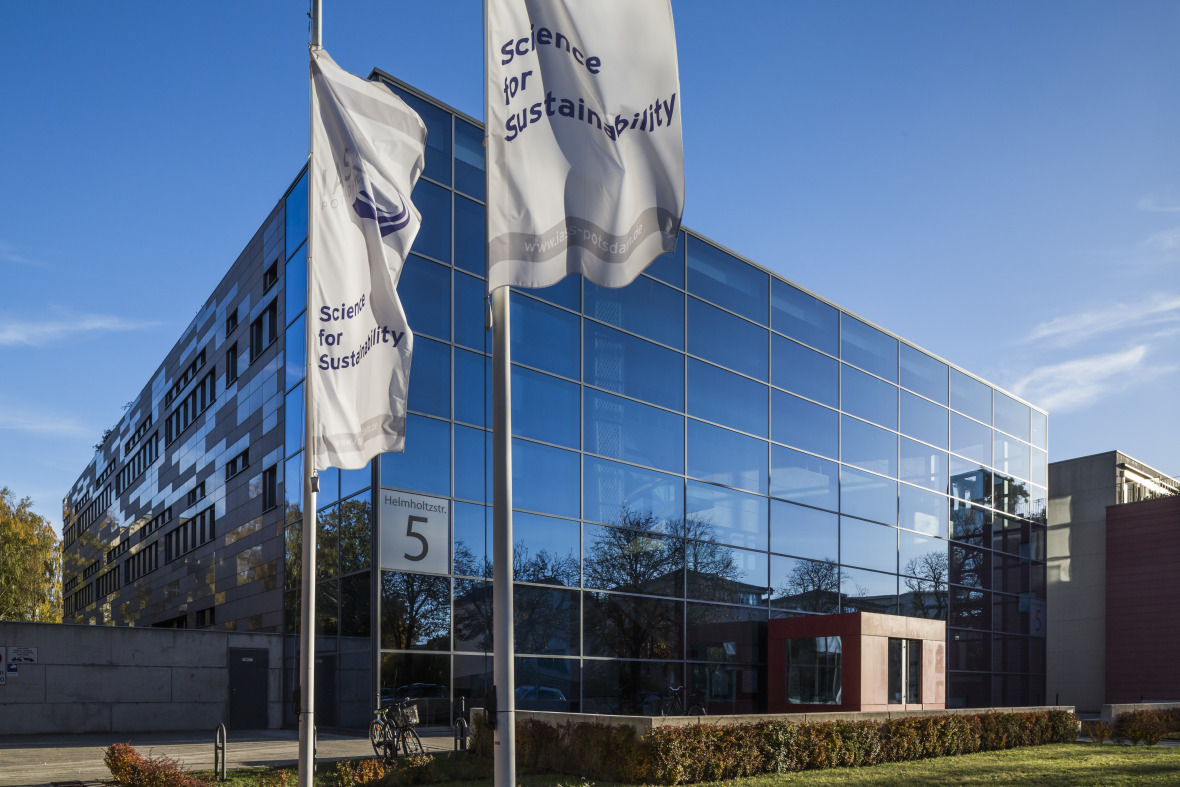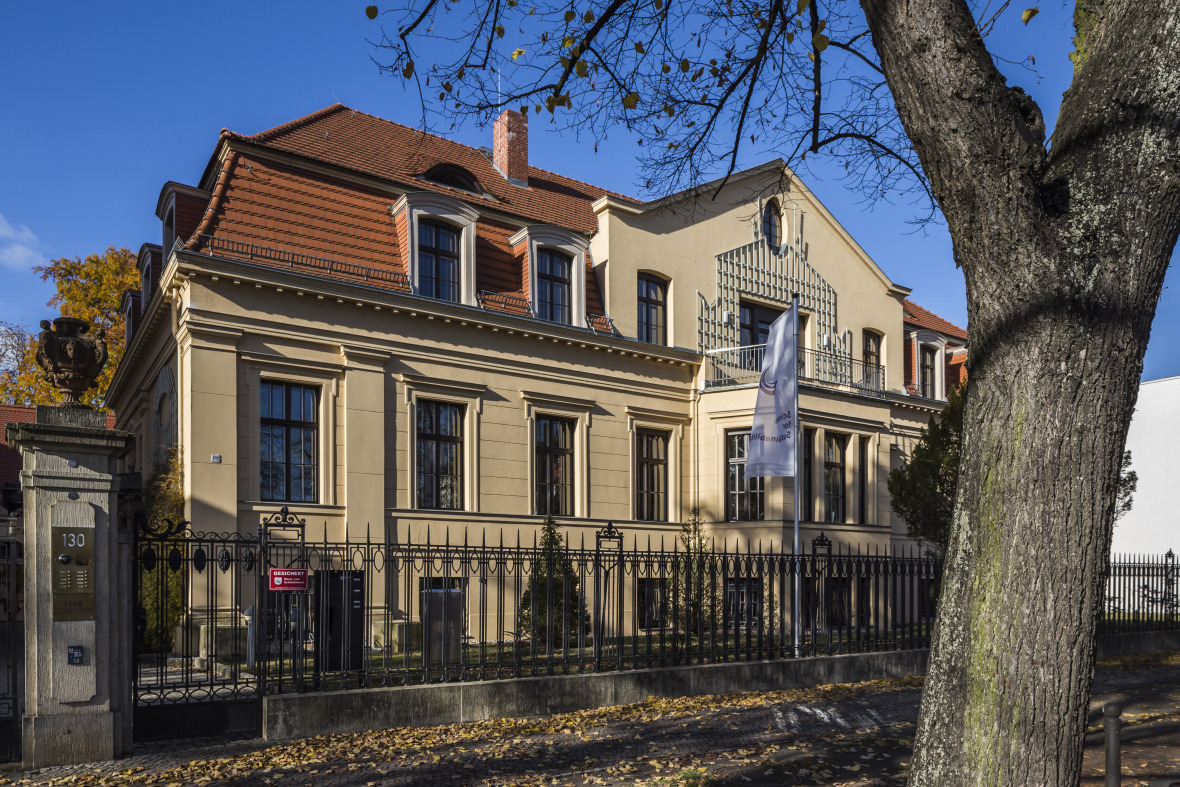Location
The Federal State of Brandenburg made the premises of the Kleist Villa on Berliner Strasse 130 and the office building on Helmholtzstrasse 5 available to RIFS.

Kleist-Villa & Bank building
The Kleist Villa houses a spacious ballroom and other rooms used to host functions as well as the offices of a number of researchers and the institute’s administrative arm. The villa was built in 1824 as the residence for the commandant of the Prussian Hussar Guards Regiment, which was garrisoned in Potsdam. In 1910, after several changes in ownership, the villa passed into the estate of Prussian aristocrat Ewald Karl Heinrich von Kleist, who commissioned extensive renovations.
These were undertaken by Otto Rehnig, the architect behind the Grand Hôtel Esplanade on Potsdamer Platz in Berlin. Among the alterations made by Rehning were a new entrance to the building and the addition of a mansard roof to create a habitable garret. Details such as the vault in the villa’s cellar, the marble fireplaces in the salons and the use of exquisite woods suggest that the Grand Hôtel Esplanade was an important source of inspiration for this work.
The renovations lent the Early Neoclassical villa a more elegant finish that included sophisticated stucco and high-quality woodwork. The Kleist Villa is a listed structure and enjoys special protection due to its intrinsic artistic and architectural value.
After World War II, the villa was occupied by a branch office of the state bank of the German Democratic Republic. Following the reunification of Germany, the building was initially used by a branch office of the central bank and subsequently as a training centre. The villa is primarily used by RIFS as a venue for receptions, conferences, and discussion events.
An historical carriage house located in the park behind the villa is now used by RIFS researchers studying transformations towards sustainability.
The building on Helmholtzstrasse is commonly referred to by staff at RIFS as “The Bank”. The building, which was designed by architects Ortner & Ortner, was first occupied by the regional office of the German central bank (1994-95). The building’s architecture sets it apart from its surroundings. Facing Helmholtzstrasse, a façade of translucent glass encloses the building’s three-storey lobby with its striking béton brut flooring and walls. Its exterior is clad with tiles of red granite in various hues, creating the impression of a mosaic façade.
The building spans three high storeys and features a rooftop pavilion surrounded by a terrace garden that is planted with fruits and herbs for employees to harvest. A vault spanning three storeys is located in the centre of the building and is used as a storeroom and a work space for small groups.
The Bank Building houses the offices of the Scientific Directors and the majority of the institute’s researchers as well as its departments for Research Management & Organisational Development, Press & Communications, and Facility Management.
In addition to this, RIFS has leased offices in the nearby Otto Nagel Straße for the project “Energy Transition Navigation System” since October 2016.

The borough
Potsdam’s Berliner Vorstadt borough extends along Berliner Strasse and is flanked by two lakes: Heiliger See and Tiefer See. The borough hosts a number of world heritage sites, including Babelsberg Park and the New Garden, and is a popular residential area. Across Berliner Straße, the Schiffbauergasse Cultural District on the banks of the Havel is home to the Hans Otto Theatre, Fabrik Dance Theatre, T-Werk Theatre, the Fluxus Plus Museum and the Waschhaus Arts & Culture Centre.
Berliner Straße itself once formed a section of the so-called ‘Royal Road’, the most important East-West transit corridor in Germany, which spanned over 1000 kilometres from Aachen to present-day Kaliningrad.